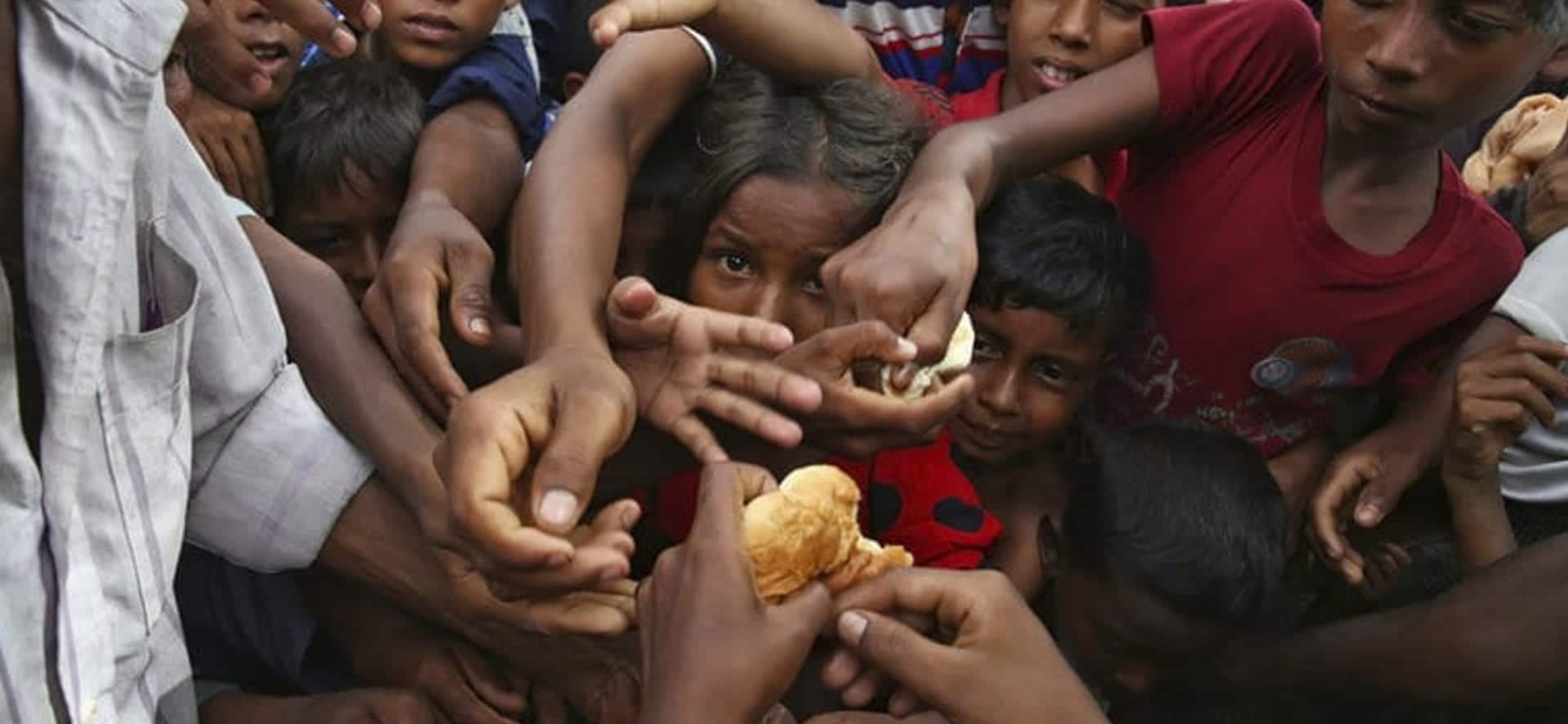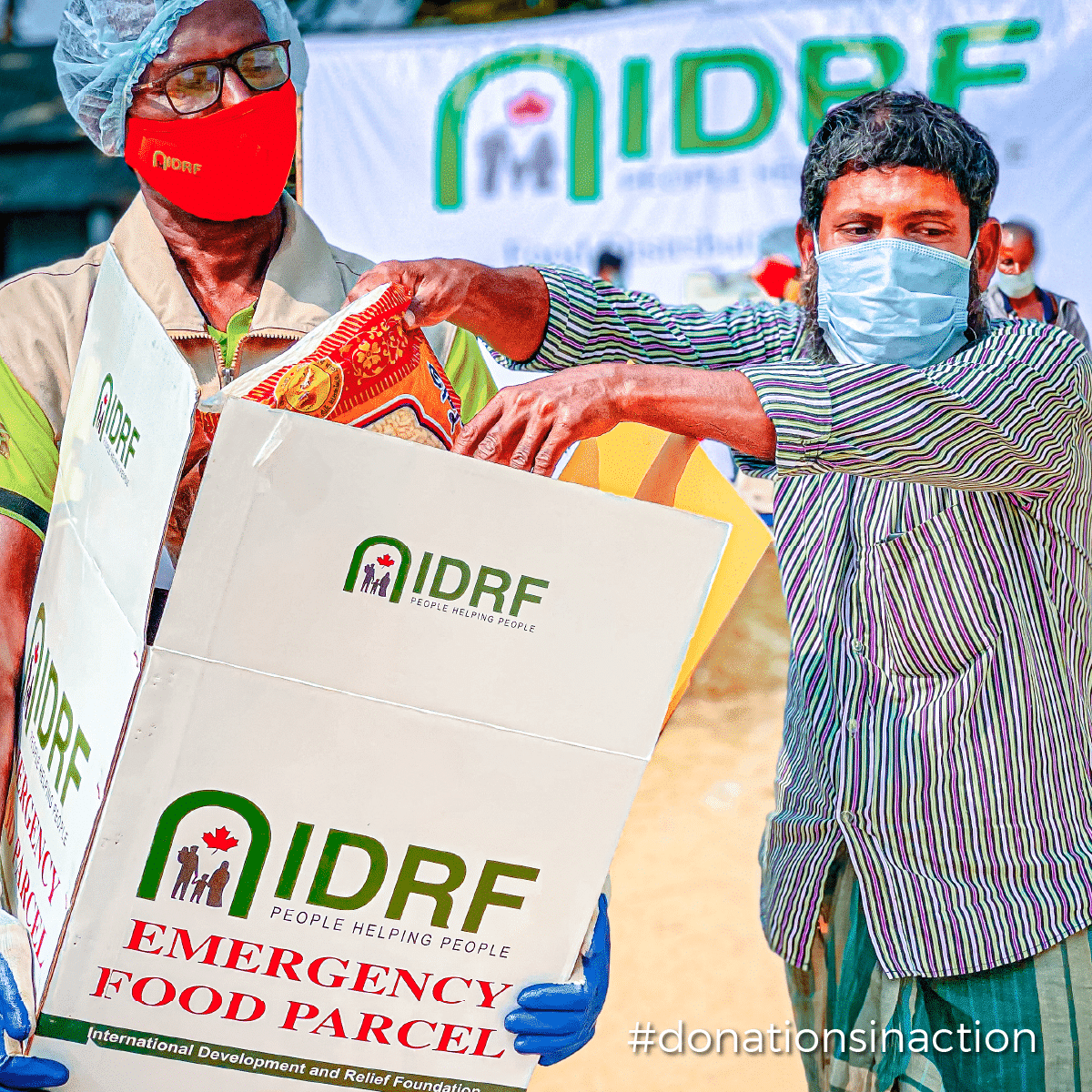Conditions were worsened when on March 23rd, a large fire wreaked havoc in Cox’s Bazar, displacing 45, 000 people and destroying 100,000 refugee shelters. Along with the large fire, the heavy monsoon season that runs from June to September destroyed even more shelters, creating never-ending instability in the region.
IDRF strives to address these housing concerns and continues to work with our local partner in Bangladesh to provide stability for Rohingya refugees who are placed in precarious housing conditions. These people have travelled barefoot for miles in search of safe housing after witnessing extreme violence and losing their family members- only to be faced with the stark reality of limited space within the camps.

Another woman whose life was changed with the shelter construction project was Sumaiya Akter, a thirty-year-old mother of two girls aged 1 year 8 months and 10 years old. She lived with her two kids and her husband, mother-in-law, and father-in-law in a 7×8 foot shelter. Her shelter was burned down in the fire. She was provided with food packages for one month and her new home is currently being constructed where her family will be provided with sufficient space and stability.
IDRF has completed 300 shelter repairs for 300 Rohingya Refugee families, and the impacted families were given shelter repair kits and training. 127 shelters were built for 127 families which in total will support 850 beneficiaries. The shelters are 12 x 13 feet and are built with a bamboo roof, fencing, reinforced concrete pillars, wood, window, and door fittings. These shelters are large enough to house 8 to 10 people. We hope to continue repairing and building new shelters to allow Rohingya refugees access to the essential human right of safe housing. The objective of the shelters is always to provide safe accommodation and provide families, especially women, with privacy and security within their own homes.

The Rohingya refugee crisis is also exacerbated by health concerns related to Covid-19. The Covid-19 crisis had a large impact on Bangladesh due to the population density and lack of health infrastructure. According to the World Health Organization, Bangladesh currently has 1,562,958 confirmed cases and 27,699 confirmed deaths. Not only do Rohingya refugees have to navigate the health concerns of Covid-19 in the congested camps but are also stigmatized as carriers of disease. This stigma also poses potential health risks as it can make Rohingya refugees scared to admit to experiencing Covid-19 symptoms and accessing appropriate treatment.
Along with these existing health concerns, one of the largest causes of disease in the camps is malnutrition. Due to the large number of refugees within the camp, the international support has not been enough to make sure each refugee is able to meet their needed nutritional needs and number of meals a day. IDRF strives to fill in these nutrition gaps so each individual can exercise their right to access healthy food and meet their necessary daily calorie count.

One of the recipients of our food programming is Ms.Mubin. Ms. Mubin is an eighty-seven-year-old woman who lives with her two sons and grandsons in a temporary shelter in Kutupalong. After receiving the food packages, she stated that “we haven’t got these kinds of nutritious foods from other projects. Children are happy to eat semai with milk. I hope IDRF will extend their humanitarian support in the future”. Rohingya refugees should be able to enjoy the pleasures of life such as their traditional desserts which is semai with milk. We look to you, the reader, to help us to continue our impactful work and assisting Rohingya refugees in accessing proper housing and attaining food security.
